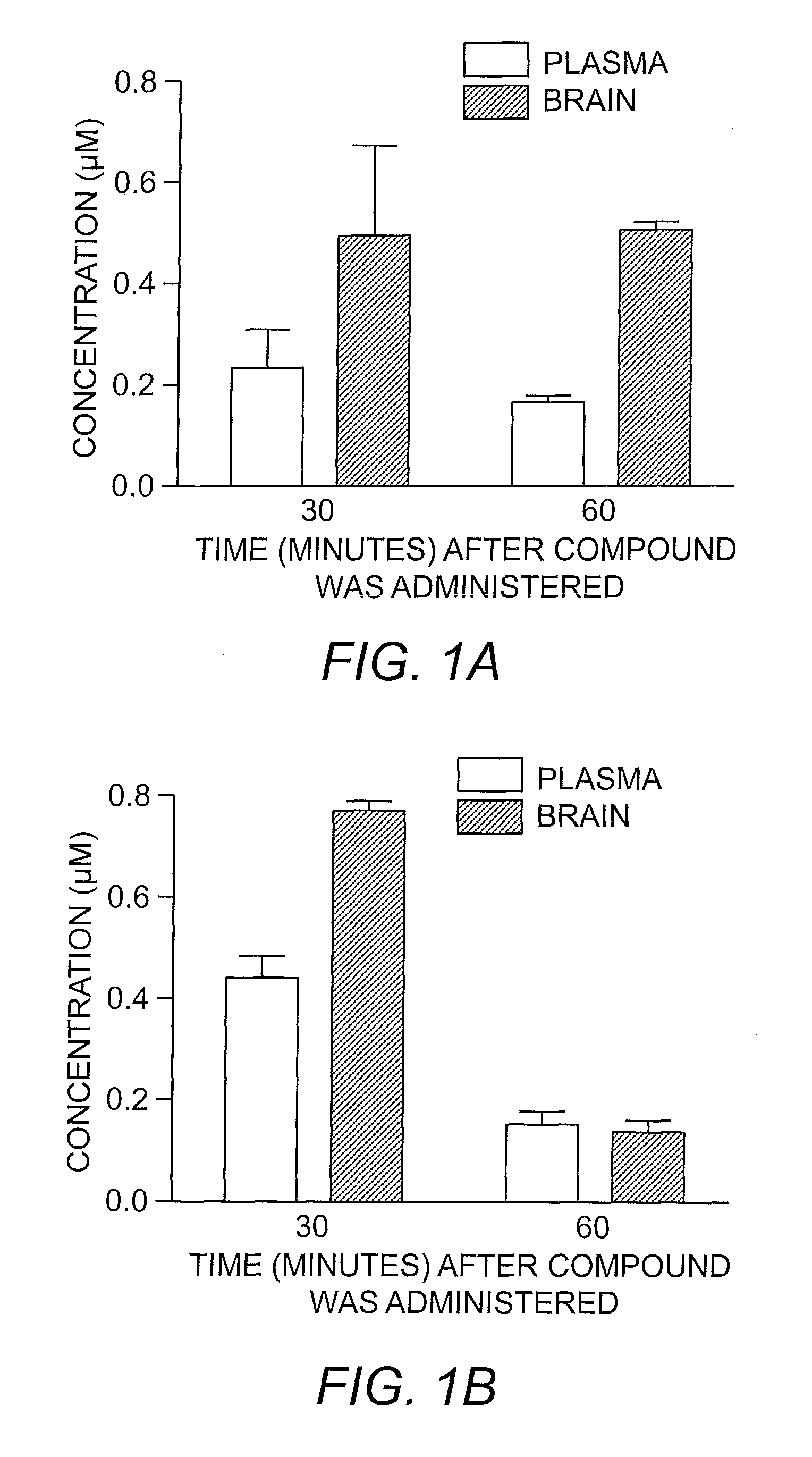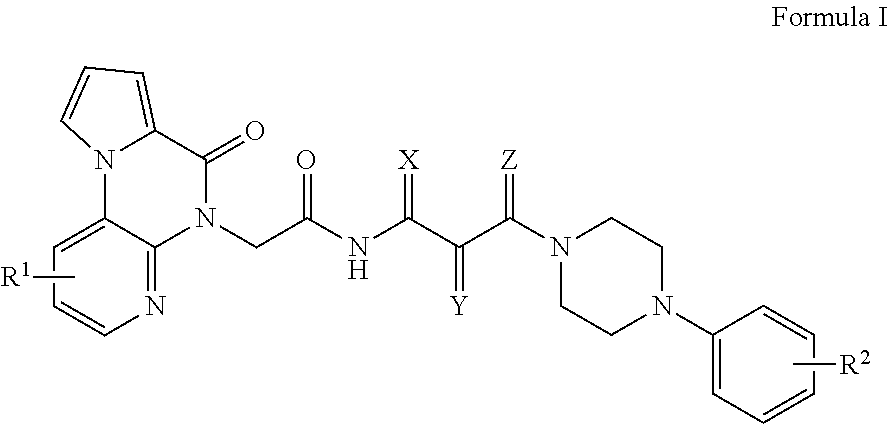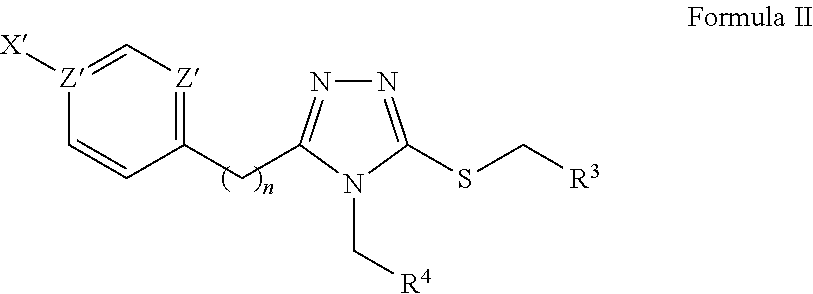Kappa opioid receptor effectors and uses thereof
a technology of kop receptor and effector, which is applied in the field of kop receptor effector, can solve the problems of triggering relapse, difficult to strike a balance, and not being able to achieve therapeutically preferable activation of kop receptor,
- Summary
- Abstract
- Description
- Claims
- Application Information
AI Technical Summary
Problems solved by technology
Method used
Image
Examples
example 1
Screening and Hit Identification
[0064]The distinct class of KOR ligands presented herein was developed based on initial hit compounds uncovered through the screening of the Molecular Libraries Small Molecule Repository (MLSMR) compound collection and subsequent optimization through the synthesis of additional analogues to investigate SAR. The project was initiated to develop new chemical probes and it was contemplated that the interest in elucidating the pharmacology of the KOR would benefit from a diverse collection of readily-available ligands. Ideally, these ligands would possess a range of pharmacological profiles. For a compound to be interesting as a lead for a pharmacological probe, it must be selective for the KOR over the other opioid receptors and possess sufficient potency to be useful. It was determined that a 100-fold selectivity and 1 μM potency was the minimum criteria for an interesting lead compound of each chemotype. Moreover, any new chemotype could not resemble a...
example 2
Synthesis of Compound 1{3}
[0071]Compound 1{3} was readily synthesized by the synthetic route shown in Scheme 1. Of particular note, compound 1{3} is achiral, which is in contrast to conventional KOR antagonists.
[0072]
2-Fluoro-4-methyl-3-(1H-pyrrol-1-yl)pyridine
[0073]
[0074]2-Fluoro-4-methylpyridin-3-amine (1.0 g, 7.93 mmol) and 2,5-dimethoxytetrahydrofuran (1.08 mL, 1.05 equiv.) were suspended in 3 mL of acetic acid and refluxed for 2 hours. The reaction was cooled down to room temperature. The solvents were removed and the residue was purified by silica gel chromatography (EtOAc / hexanes=1:8, Rf=0.3) to afford 1.0 g (72%) oil. 1H NMR (400 MHz, CDCl3) δ 8.10 (dd, J=0.8, 5.1 Hz, 1H), 7.17 (d, J=5.1 Hz, 1H), 6.74 (td, J=2.1, 0.9 Hz, 2H), 6.40 (t, J=2.1 Hz, 2H), 2.26 (s, 3H). 13C NMR (101 MHz, CDCl3) δ 160.2, 157.8, 149.6, 149.5, 145.5, 145.4, 123.80, 123.76, 122.1, 109.8, 17.29, 17.25. HRMS (m / z) calcd for C10H10FN2 (M+H) 177.0828. found 177.0827. Richards, et al. (2008) Bioorg. &Med. C...
example 3
SAR Expansion and Optimization of Chemotype I
[0089]Synthetic chemistry was conducted for the new chemotype, and the analogues synthesized effectively represent a single round of optimization, therefore the decision of analogues synthesized was guided by the initial screening data and a limited set of commercially-available follow up compounds. Therefore, further optimization of the chemotype is contemplated. The short, flexible synthetic route of the instant scaffold allows easy preparation of additional analogs to hone in on the desired characteristics or allow the possible incorporation of mass detection or fluorescent markers. Both the malleability and optimization potential is illustrated through the following detailed account for the scaffold. A key feature of the instant chemotype is that it is a distinct, novel class of general KOR antagonists with sufficient analogues to demonstrate tractable SAR. The modular synthetic route to this class of compounds is summarized in Scheme...
PUM
| Property | Measurement | Unit |
|---|---|---|
| temperature | aaaaa | aaaaa |
| solubility | aaaaa | aaaaa |
| solubility | aaaaa | aaaaa |
Abstract
Description
Claims
Application Information
 Login to View More
Login to View More - R&D
- Intellectual Property
- Life Sciences
- Materials
- Tech Scout
- Unparalleled Data Quality
- Higher Quality Content
- 60% Fewer Hallucinations
Browse by: Latest US Patents, China's latest patents, Technical Efficacy Thesaurus, Application Domain, Technology Topic, Popular Technical Reports.
© 2025 PatSnap. All rights reserved.Legal|Privacy policy|Modern Slavery Act Transparency Statement|Sitemap|About US| Contact US: help@patsnap.com



